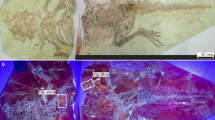Abstract
THE receipt of a copy of Prof. J. C. Ewart's admirable paper on “The Multiple Origin of Horses and Ponies” suggests a few remarks. The paper in question is from the Transactions of the Highland and Agricultural Society of Scotland, 1904—one could wish that it had appeared in a publication which comes more regularly under the notice of zoologists. In a previous paper (Proc. Roy. Soc. Edinburgh, 1903) Prof. Ewart had shown conclusively that Equus prjevalskii was not a hybrid between the kiang and the common horse, and had arrived at the conclusion that it might very well rank as a valid species. Lydekker in 1902 had proposed to regard E. prjevalskii (or przewalskii) as a subspecies of E. caballus, and now Prof. Ewart does the same, while recognising also two other subspecies, E. c. typicus and E. c. celticus. The animal named typicus is the Norse horse, which is arbitrarily selected as the type of the Linnean caballus. The Celtic pony, still surviving in the pure state in Iceland, is given the new name E. c. celticus. In its way, Prof. Ewart's demonstration of the distinctive characters of this animal deserves to rank with Darwin's treatise on the primrose, as an example of genius applied to common things. The case is so clear that the author himself is evidently half inclined to regard the Celtic pony as a valid species, and it seems to me that the facts justify us in recognising three species of living horses, E. prjevalskii (Poliakoff), E. celticus (Ewart) and E. caballus (L.). The indications are that these animals were quite distinct in the wild state, and the fact that various blends between caballus and celticus exist in domestication is no more proof of specific identity than the same sort of thing is among the dogs, which nobody doubts to have originated from more than one wild species.
This is a preview of subscription content, access via your institution
Access options
Subscribe to this journal
Receive 51 print issues and online access
$199.00 per year
only $3.90 per issue
Buy this article
- Purchase on Springer Link
- Instant access to full article PDF
Prices may be subject to local taxes which are calculated during checkout
Similar content being viewed by others
Author information
Authors and Affiliations
Rights and permissions
About this article
Cite this article
COCKERELL, T. The Origin of the Horse. Nature 70, 53–54 (1904). https://doi.org/10.1038/070053c0
Issue Date:
DOI: https://doi.org/10.1038/070053c0
Comments
By submitting a comment you agree to abide by our Terms and Community Guidelines. If you find something abusive or that does not comply with our terms or guidelines please flag it as inappropriate.



